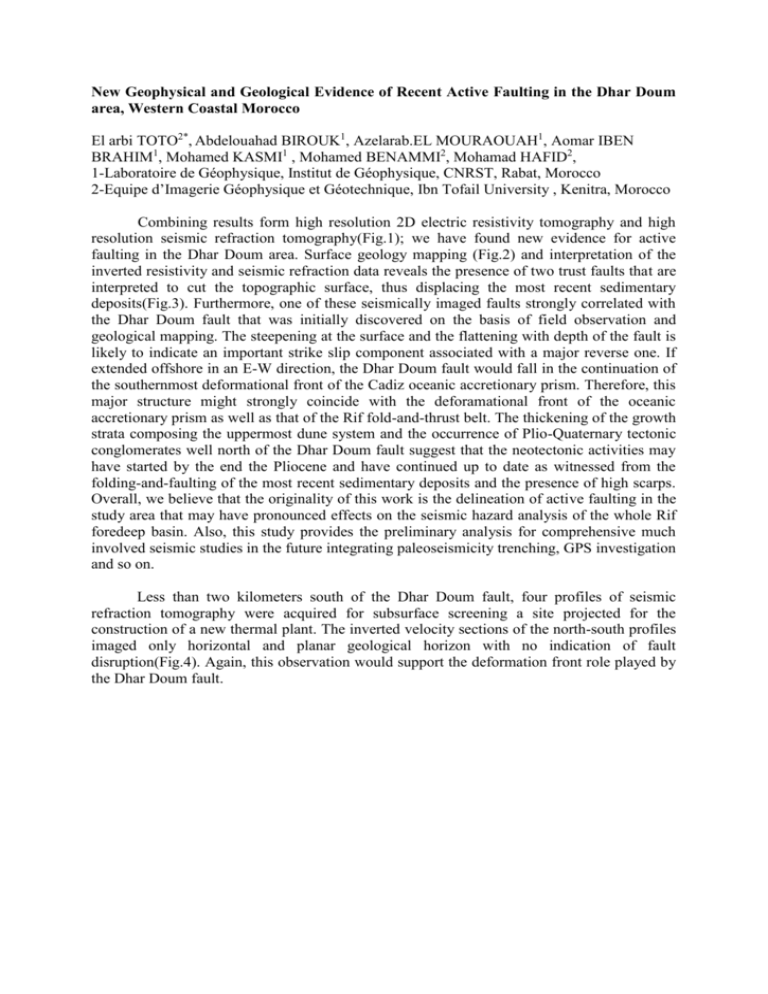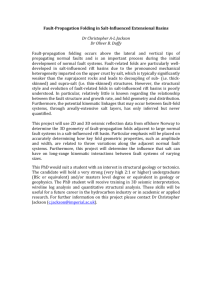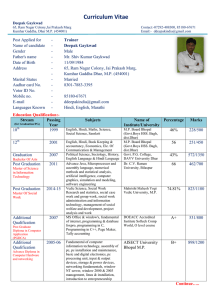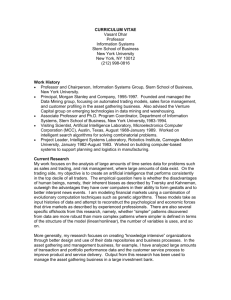Dhardoum: Fault 2003
advertisement

New Geophysical and Geological Evidence of Recent Active Faulting in the Dhar Doum area, Western Coastal Morocco El arbi TOTO2*, Abdelouahad BIROUK1, Azelarab.EL MOURAOUAH1, Aomar IBEN BRAHIM1, Mohamed KASMI1 , Mohamed BENAMMI2, Mohamad HAFID2, 1-Laboratoire de Géophysique, Institut de Géophysique, CNRST, Rabat, Morocco 2-Equipe d’Imagerie Géophysique et Géotechnique, Ibn Tofail University , Kenitra, Morocco Combining results form high resolution 2D electric resistivity tomography and high resolution seismic refraction tomography(Fig.1); we have found new evidence for active faulting in the Dhar Doum area. Surface geology mapping (Fig.2) and interpretation of the inverted resistivity and seismic refraction data reveals the presence of two trust faults that are interpreted to cut the topographic surface, thus displacing the most recent sedimentary deposits(Fig.3). Furthermore, one of these seismically imaged faults strongly correlated with the Dhar Doum fault that was initially discovered on the basis of field observation and geological mapping. The steepening at the surface and the flattening with depth of the fault is likely to indicate an important strike slip component associated with a major reverse one. If extended offshore in an E-W direction, the Dhar Doum fault would fall in the continuation of the southernmost deformational front of the Cadiz oceanic accretionary prism. Therefore, this major structure might strongly coincide with the deforamational front of the oceanic accretionary prism as well as that of the Rif fold-and-thrust belt. The thickening of the growth strata composing the uppermost dune system and the occurrence of Plio-Quaternary tectonic conglomerates well north of the Dhar Doum fault suggest that the neotectonic activities may have started by the end the Pliocene and have continued up to date as witnessed from the folding-and-faulting of the most recent sedimentary deposits and the presence of high scarps. Overall, we believe that the originality of this work is the delineation of active faulting in the study area that may have pronounced effects on the seismic hazard analysis of the whole Rif foredeep basin. Also, this study provides the preliminary analysis for comprehensive much involved seismic studies in the future integrating paleoseismicity trenching, GPS investigation and so on. Less than two kilometers south of the Dhar Doum fault, four profiles of seismic refraction tomography were acquired for subsurface screening a site projected for the construction of a new thermal plant. The inverted velocity sections of the north-south profiles imaged only horizontal and planar geological horizon with no indication of fault disruption(Fig.4). Again, this observation would support the deformation front role played by the Dhar Doum fault. Fig.1. The Blue box show the location of the study area and the black double-head arrow is giving the location of the high resolution geophysical tomographic profiles. N S Fig 3. Dhar Doum Fault exposures, south of Merja Zarga.(a), disrupting the surface and warping the Quaternary sand dune deposits into anticline and syncline folds. Fig.3. The inverted tomographic velocity and electric resistivity for the high resolution northsouth profile cutting at right angle to the Dhar Doum fault. Note the lateral change in the velocity and the resistivity and the southward thickening of the uppermost coastal dune system. TOMOGRAMME PROFILE P3 (ONDES P) 0 -20 -40 -60 0 50 100 150 200 Echelle des vitesses (m/s) 300 800 1300 1800 2300 2800 Fig.4. The inverted seismic velocity sections obtained from high resolution north-south seismic refraction tomography profiles located at least two kilometers south of the Dhar Doum fault. Notice the horizontal continuity of the velocity layers and the absence of any indication of fault disruption. *Corresponding author: El arbi Toto, applied geophysics Research unit: Geophysical imaging and geotechniques Geology Department Faculty of Sciences, BP 133 University of Ibn Tofail Kenitra, Morocco Email: arbitoto@gmail.com









